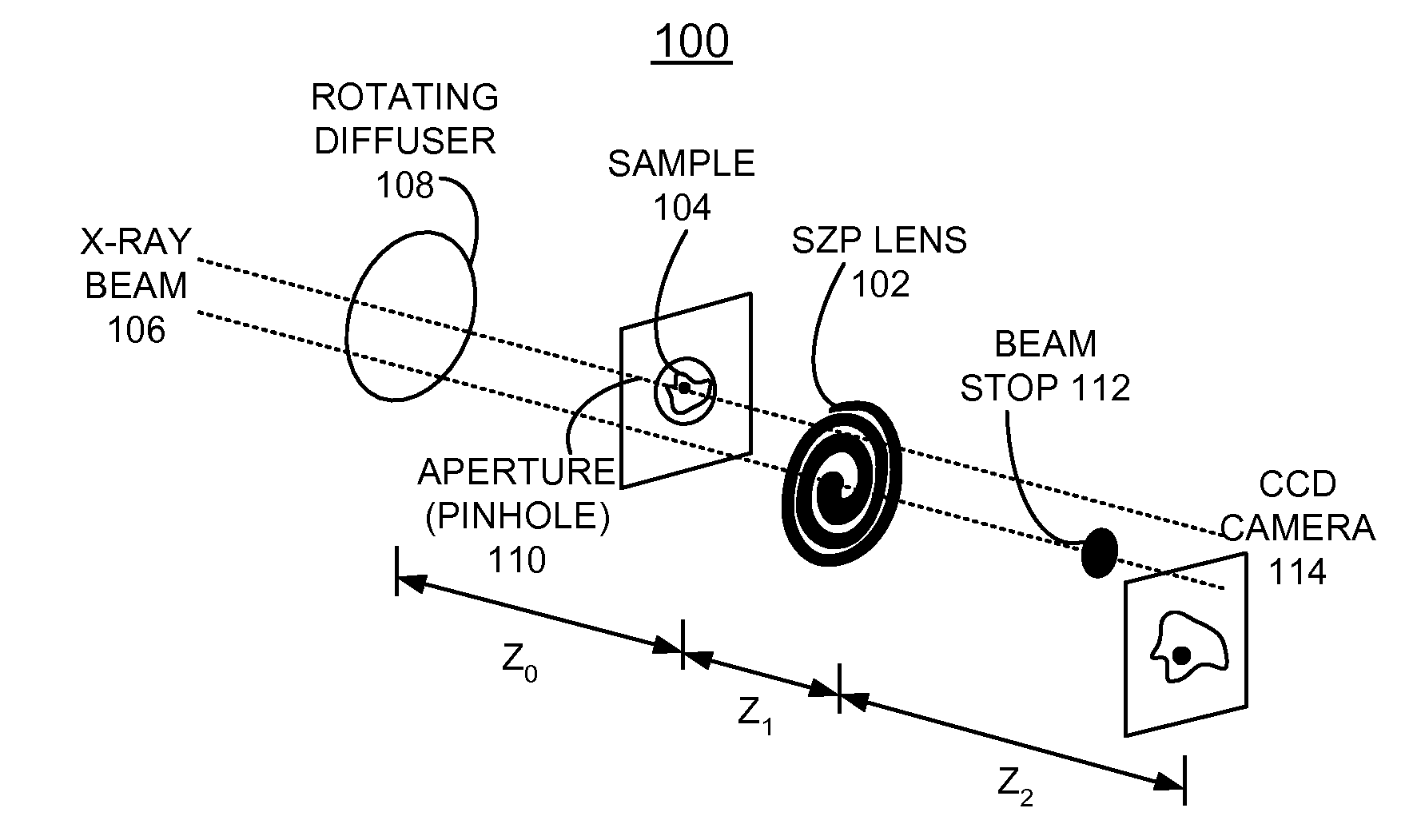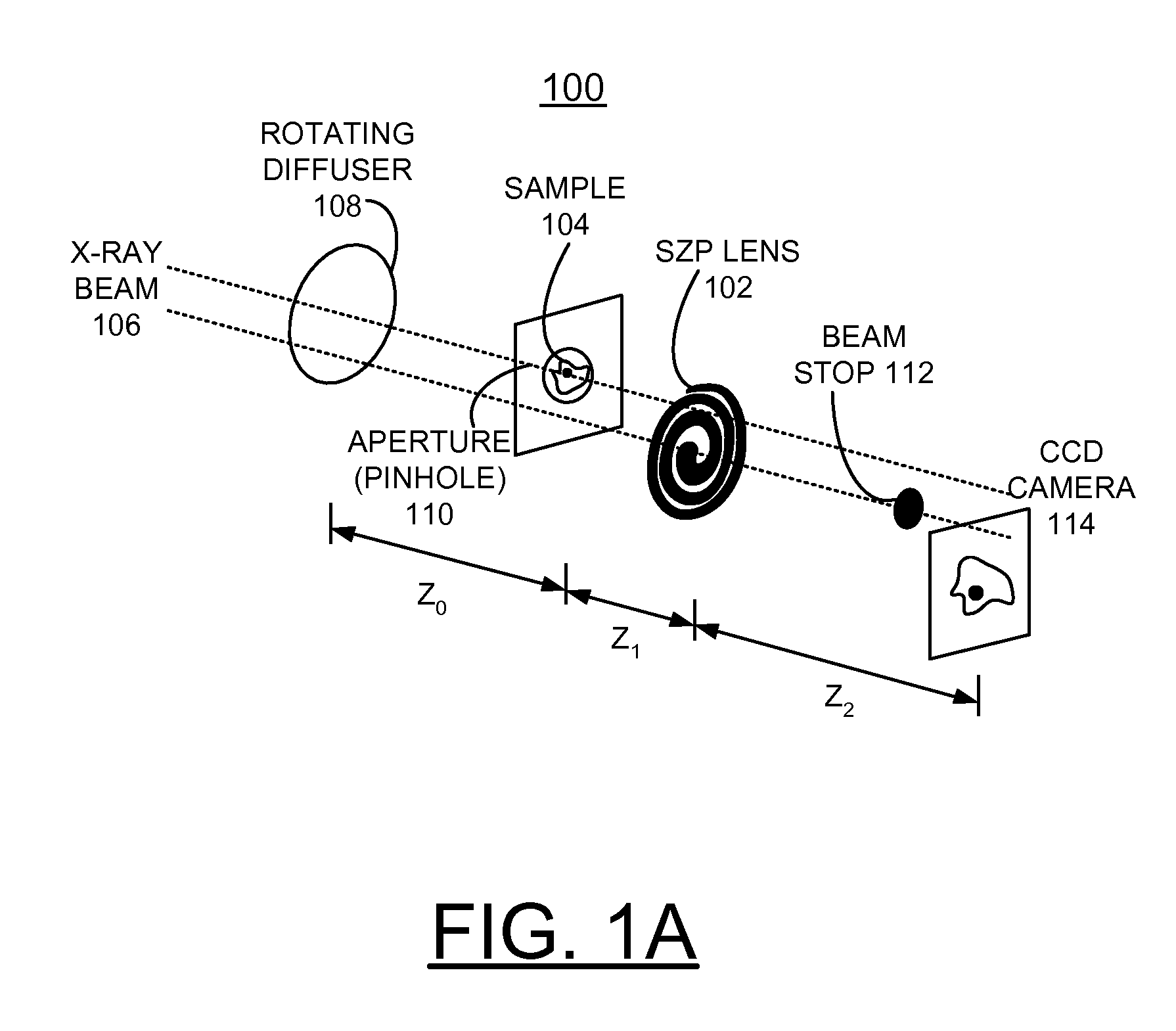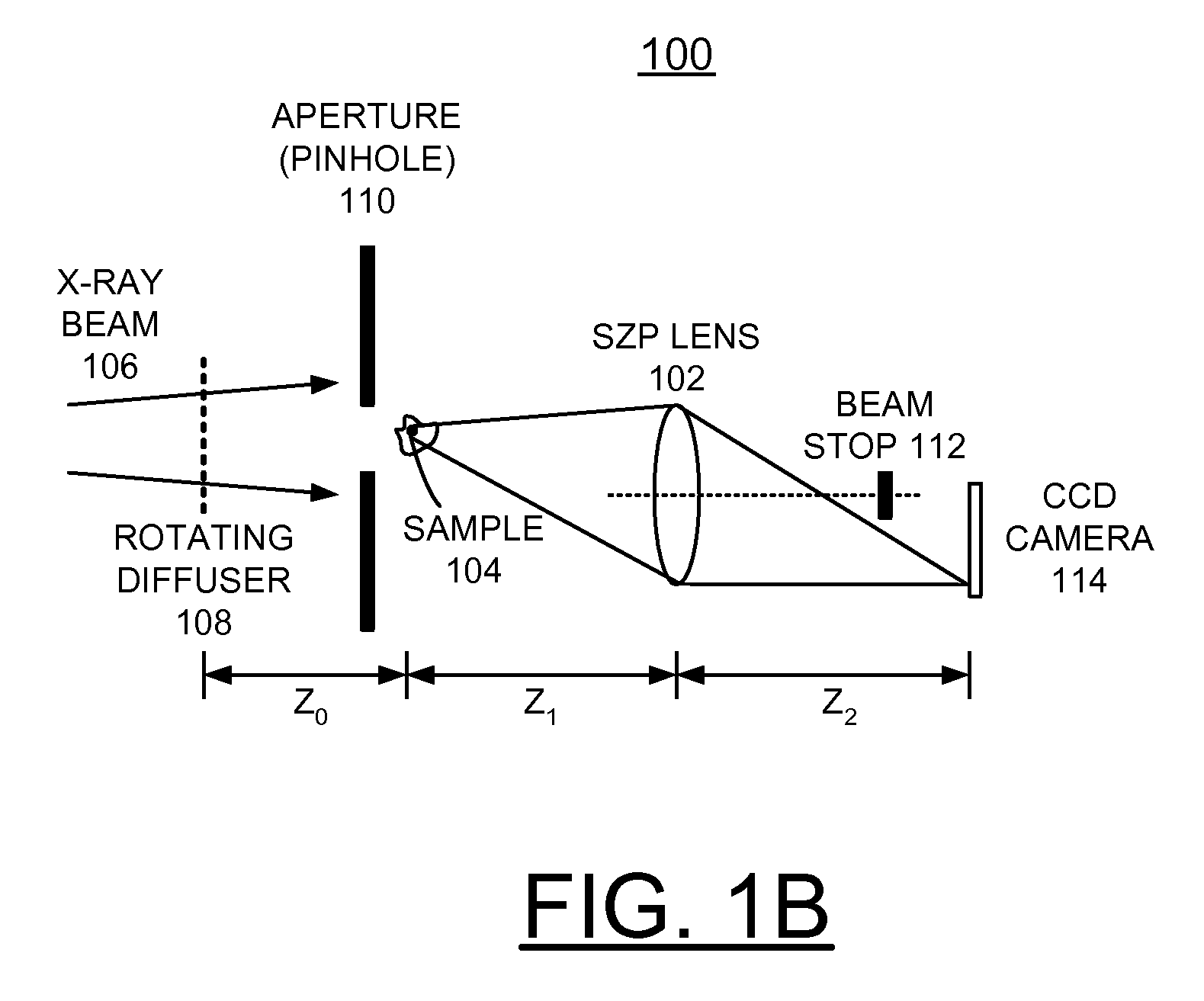Use of a focusing vortex lens as the objective in spiral phase contrast microscopy
a vortex lens and phase contrast technology, applied in the field of phase contrast microscopy, can solve the problems of limiting the chromatic range of the microscope, the type of source, and the cost of phase contrast by means of defocus, and achieve the effect of simple, efficient and inexpensiv
- Summary
- Abstract
- Description
- Claims
- Application Information
AI Technical Summary
Benefits of technology
Problems solved by technology
Method used
Image
Examples
Embodiment Construction
[0023]In accordance with features of the invention, a micron-scale full-field spiral phase microscope is provided with a hard x-ray beam replacing the microscope objective lens with a focusing vortex lens. A refractive focusing vortex lens has helical phase steps fabricated into the curved surface of a conventional refractive lens. A diffractive focusing vortex lens has phase-shifting spiral zones instead of the circular zones in a conventional diffractive lens. Both types of lenses focus and impart a helical phase to the incident illumination. This helical phase allows the object to be imaged with azimuth-independent phase contrast and without additional optics, source requirements, reference waves, or iterative methods. A significant and principal benefit of this method is that it is applicable to all microscopes by substituting a focusing vortex lens in place of the usual objective lens. Advantages of this method hold for practical full-field x-ray microscope and this optical met...
PUM
 Login to View More
Login to View More Abstract
Description
Claims
Application Information
 Login to View More
Login to View More - R&D
- Intellectual Property
- Life Sciences
- Materials
- Tech Scout
- Unparalleled Data Quality
- Higher Quality Content
- 60% Fewer Hallucinations
Browse by: Latest US Patents, China's latest patents, Technical Efficacy Thesaurus, Application Domain, Technology Topic, Popular Technical Reports.
© 2025 PatSnap. All rights reserved.Legal|Privacy policy|Modern Slavery Act Transparency Statement|Sitemap|About US| Contact US: help@patsnap.com



